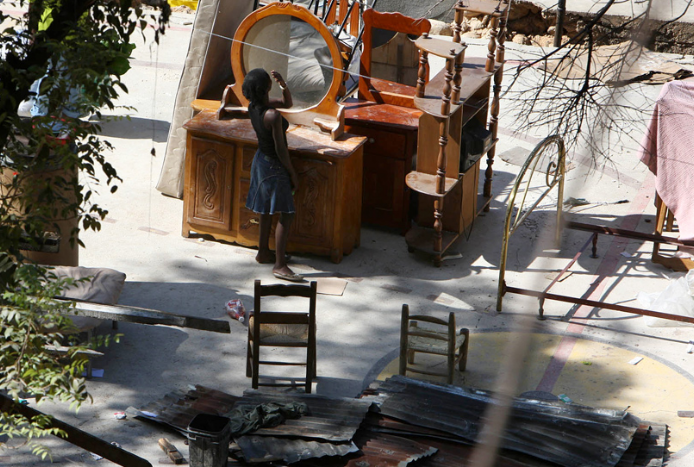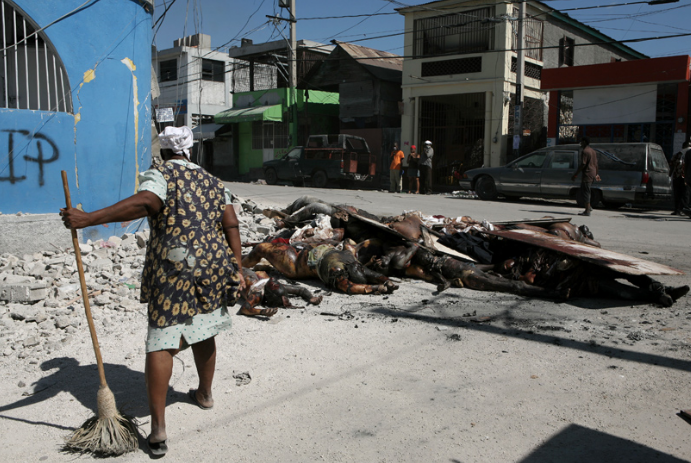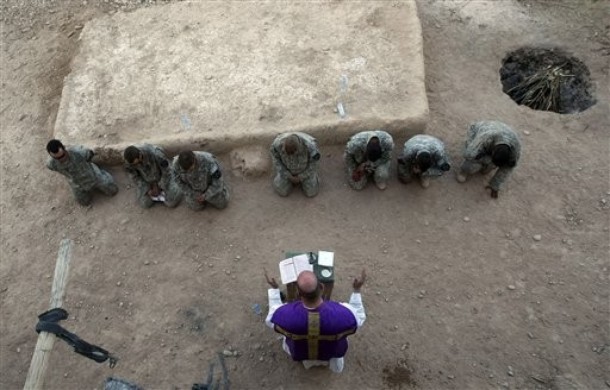Notes
Haiti: But She Can Sweep

by contributor Robert Hariman
This week the New York Times ran a story entitled Haiti Emerges From Its Shock, and Tears Roll. The government had declared a national period of mourning, and the point of the story was that Haitians finally were able to grieve openly and collectively about their devastating losses. An accompanying slide show featured funerals and memorial services, while the story itself included eloquent testimonials that could have been included in any eulogy.
Whatever the good intentions behind the reportage, I can’t help but think that this and similar stories are themselves ritual events: specifically, memorial services provided precisely so that the American audience can psychologically declare an end to the disaster and move on. The massive mobilization of charitable giving is slowing down, and the surge of compassion is being replaced by the daunting complexity of managing the long effort of reconstruction, and, well, it’s been more than a month and the Winter Olympics are on.
Like any story, it seems that catastrophes ought to have a beginning, a middle, and an end. Likewise, the dramatic rupture of the beginning culminates in the symbolic repair provided by ritual performance at the end. And so it is that the shock of the initial trauma is soothed by the tears of emotional release during the time to mourn. These are important features of human life, and the press would be remiss in ignoring them. That said, there is another story to be told that has nothing to do with dramatic gestures.
This is a photograph from the “middle period” of the disaster–a time when people already were beginning to get on with their lives. Furniture from a ruined house has been put out in the street. A woman is walking by, then stops and checks her reflection in the mirror. You can see that she is adjusting something–her hair or an eyebrow, perhaps. The scene is surprisingly intimate, and our gaze is not intrusive as she clearly would be aware that she is in a public setting. Come to think of it, people often steal a moment of privacy to check their appearance in store windows or other public mirrors, much as she is doing here.
One might be tempted to fault her. “How vain! What a princess. Doesn’t she know her country has been wrecked?” I don’t see it that way. Instead, I see an act of triumph over adversity. A small act, to be sure–we are at the lowest level of the micro-political here–but an assertion that life as she knew it will go on somehow and she has a future in which it matters how she looks. In short, amidst near complete disruption of the normal state of things (where one’s bedroom now is in the street), there remain practical opportunities to do what you would want to do anyway.
I think this ability to assert the small routines of everyday life is an important political resource. And just to make sure that we understand how much resilience is at stake, look at this:

A woman is sweeping up the debris in the street in front of a pile of decomposing bodies. From her smock and broom, I’d say she’s swept up before. And why not now? She can’t move the bodies by herself, but she can sweep, and that has to be done if the place is to get back to normal. And don’t tell her that the scale of destruction is too great or that recovery will take many years or that there’s nothing she can do.
As in the first photo, we see a lone individual engaging in what is usually a private activity, but now in a public space or a space having unusual public significance. In each case, I think we are seeing a civic practice, albeit in a peculiar sense. These are not the practices of state action or global mobilization by state and non-governmental organizations; instead, they are the simple habits of life. Habits that have transformative power precisely because they aspire to no more than continuity.
Cross-posted from No Caption Needed.
(photos: Ruth Fremson and Damon Winter for the New York Times.)


Reactions
Comments Powered by Disqus